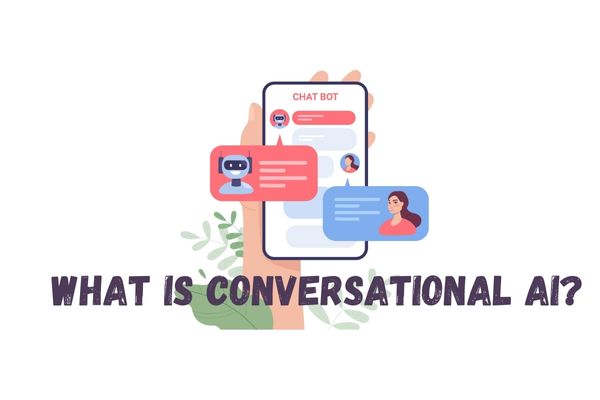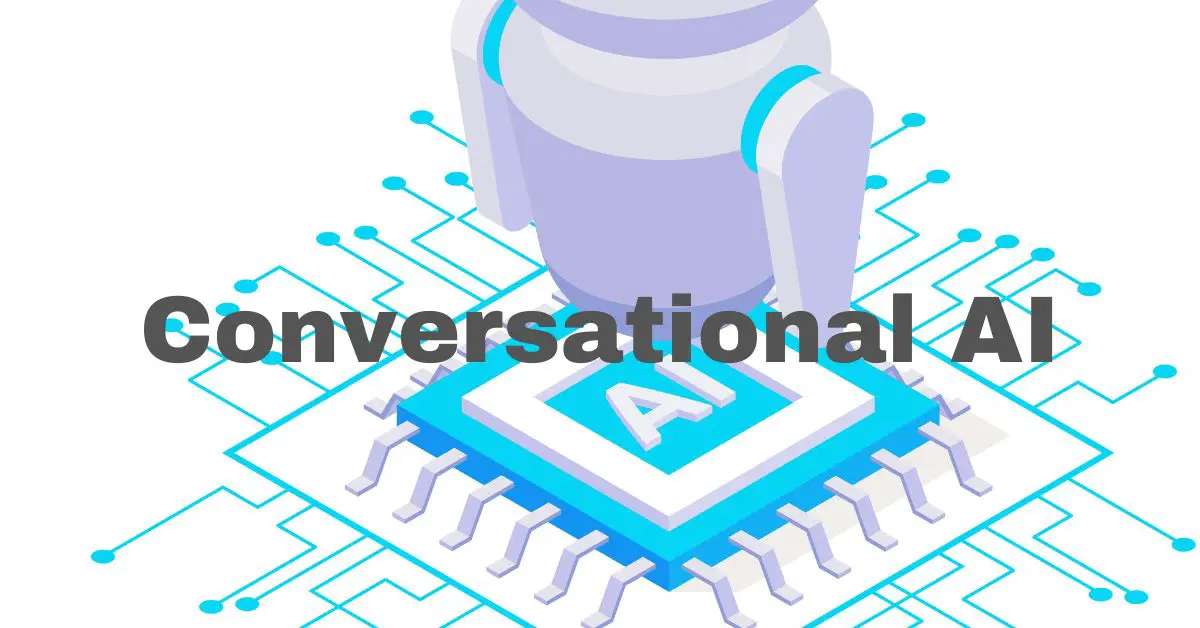|
Getting your Trinity Audio player ready... |
Conversational AI, also known as chatbots, virtual assistants, or voice assistants. It is a technology that enables computers to understand human language and communicate with people in a natural and intuitive way.
Conversational AI is becoming increasingly popular as businesses look for ways to automate customer interactions and improve customer experience.
Front-End Trends In Web Technology
Progressive Web Apps (PWAs) – A Future of Mobile Applications
What is Conversational AI?

Conversational AI is a type of artificial intelligence (AI) that allows machines to communicate with humans using natural language.
It uses a combination of machine learning, natural language processing (NLP), and other technologies to understand and respond to human language in a way that mimics human conversation.
Chatbots are a common example of conversational AI. They are computer programs that can interact with humans through text-based conversations, such as on social media platforms, messaging apps, or websites. Virtual assistants, like Apple’s Siri or Amazon’s Alexa, are another example of conversational AI that uses voice recognition technology to communicate with users.
How does Conversational AI work?
Conversational AI uses a variety of techniques to understand and respond to human language. Here are some of the key components of conversational AI:
1. Natural Language Processing (NLP)
NLP is a subfield of AI that focuses on understanding and interpreting human language. NLP allows machines to analyze and understand the structure and meaning of language and respond in a way that is natural and intuitive to humans.
2. Machine Learning (ML)
ML is a technique that allows machines to learn and improve their performance over time without being explicitly programmed. Conversational AI uses ML algorithms to analyze and learn from the interactions it has with users, improving its responses over time.
3. Intent Recognition
Intent recognition is the ability of conversational AI to understand the purpose or intention behind a user’s message. This is done by analyzing the context and content of the message, as well as the user’s previous interactions with the system.
4. Dialogue Management
Dialogue management is the process of managing the flow of conversation between the user and the system. It involves determining the appropriate response based on the user’s input and the system’s knowledge and capabilities.
What are the benefits of Conversational AI?

Conversational AI has several benefits for businesses and organizations, Which is given below:-
1. Improved Customer Experience
Experience: Conversational AI allows businesses to provide personalized and immediate support to customers. Chatbots and virtual assistants can handle routine queries, freeing up customer service agents to focus on more complex issues.
2. Increased Efficiency
Conversational AI can automate repetitive tasks and processes, reducing the time and resources required to perform them. This can lead to cost savings and increased productivity for businesses.
3. 24/7 Availability
Conversational AI can operate around the clock, providing support and assistance to customers at any time of the day or night
4. Data Insights
Conversational AI can collect and analyze data from customer interactions, providing valuable insights into customer behavior and preferences. This can help businesses improve their products and services and tailor their marketing and sales strategies
What are the challenges of Conversational AI?
1. Natural Language Understanding
Despite significant advances in NLP, conversational AI still struggles with understanding the nuances and complexities of human language. This can lead to misinterpretation and miscommunication, which can frustrate users.
2. Contextual Awareness
Conversational AI needs to be able to understand the context of a conversation in order to provide accurate and relevant responses. This can be challenging, especially in situations where the context is ambiguous or unclear.
3. Technical Complexity
Implementing conversational AI can be technically complex, requiring expertise in AI, NLP, ML, and other related fields. This can make it difficult for businesses to develop and maintain conversational AI systems in-house.
Conclusion
We discussed a few important points about Conversational AI. We hope We clear some points about Conversational AI. basically, Conversational AI is a thing that changed thinking about the Internet and It is really helpful for both our personal and professional life.
[responsivevoice_button]
Arsalan Malik is a passionate Software Engineer and the Founder of Makemychance.com. A proud CDAC-qualified developer, Arsalan specializes in full-stack web development, with expertise in technologies like Node.js, PHP, WordPress, React, and modern CSS frameworks.
He actively shares his knowledge and insights with the developer community on platforms like Dev.to and engages with professionals worldwide through LinkedIn.
Arsalan believes in building real-world projects that not only solve problems but also educate and empower users. His mission is to make technology simple, accessible, and impactful for everyone.



